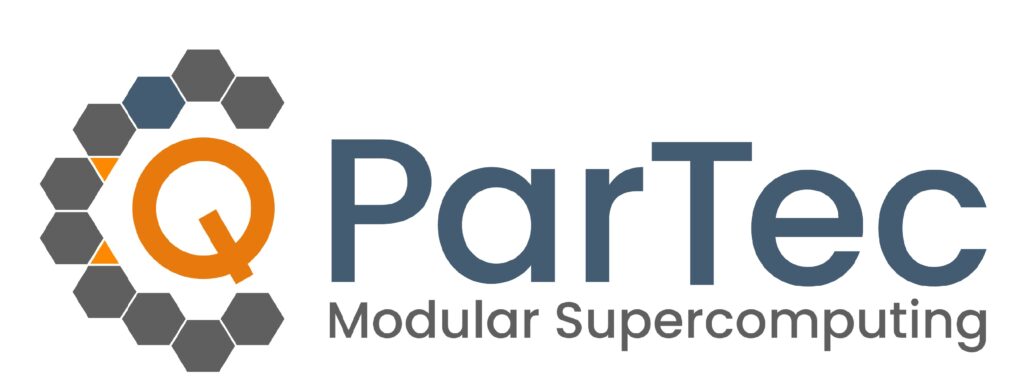Founding members
Atos is a global leader in digital transformation with 105,000 employees and annual revenue of over € 11 billion. European number one in cybersecurity, cloud and high-performance computing, the group provides tailored end-to-end solutions for all industries in 71 countries. A pioneer in decarbonization services and products, Atos is committed to a secure and decarbonized digital for its clients. Atos operates under the brands Atos and Atos|Syntel. Atos is a SE (Societas Europaea), listed on the CAC40 Paris stock index.
The purpose of Atos is to help design the future of the information space. Its expertise and services support the development of knowledge, education and research in a multicultural approach and contribute to the development of scientific and technological excellence. Across the world, the Group enables its customers and employees, and members of societies at large to live, work and develop sustainably, in a safe and secure information space.
Generating finer-grained weather forecasts, designing cleaner aircraft engines, leveraging genomic s to implement personalized medicine… all these innovations require the computing power of supercomputers. Atos is committed to developing the innovative HPC systems and solutions needed to solve the major challenges of the 21st century.
Atos has designed the BullSequana ranges of HPC servers to provide maximum flexibility in terms of interconnect, processor type, power, and cooling, and cover the widest possible spectrum of applications. BullSequana supercomputers offer an infinitely adaptable response, from departmental HPC clusters to world-class supercomputers.
Beyond BullSequana system design and delivery, Atos addresses all HPC needs with a wide range of complementary services and solutions around HPC, such as HPC-as-a-service solutions, BullSequana extreme data offers, and the mobull Data Center in a mobile container.
CEA is a French leading player in research, development and innovation. It has more than 20 000 staff members in the development of low carbon energies, digital transition, medicine of the future, defence and national security, and underlying fundamental research for all these objectives.
CEA is a major player throughout the value chain of HPC, performing R&D in various domains, such as silicon technology, processor architecture, quantum computing, system integration, software stacks, middleware, software environments and tools for HPC.
CEA, together with many partners in research and industry, is an advanced developer and user of numerical simulation and data analytics applications in the areas related to its missions.
CEA also owns and operates two world-class computing infrastructures (TERA and TGCC), and deploys related HPC services, for the benefit of national and European research, industry, and national defence. Industrial access to HPC has been deployed for 15 years at CEA CCRT, hosted at TGCC, through an original partnership business model and a dedicated 9 petaflop/s supercomputer.
CEA DIF centre, located in the Paris region, encompasses the operational division in charge of HPC at CEA, which operates the aforementioned computing centres and leads R&D and co-design in hardware and software technologies for HPC systems. (to find out more: http://www-hpc.cea.fr/index-en.htm)
The Forschungszentrum Jülich (FZJ) – a member of the Helmholtz Association – is with its nearly 6.500 employees one of the largest research centres in Europe. It pursues cutting-edge interdisciplinary research addressing the challenges facing society in the fields of health, energy and the environment, and information technologies. In the latter field, a major role is played by the Jülich Supercomputing Centre, an institute within FZJ: https://www.fz-juelich.de/ias/jsc/DE/Home/home_node.html
The Jülich Supercomputing Centre (JSC) operates some of the highest performance computing systems in Europe (currently JUWELS and JURECA) and offers computing time through PRACE to the scientific community across the continent. JSC is one of the three national supercomputing centres in Germany, which together form the Gauss Centre for Supercomputing (GCS).
JSC participates in and is the driving force in a large number of R&D projects in the field of Supercomputing and Big Data, including amongst many others the DEEP project series, the PRACE implementation phases, the Quantum and the Human Brain Flagship projects, or the European Processor Initiative. Furthermore, JSC has established jointly operated laboratories to develop and test new promising HPC architectures and prototypes to enter the Exascale era, as well as to foster co-design strategies. Examples of such collaborations are the Joint Virtual Lab AIDAS (with CEA), the NVIDIA Application Lab, the long-term FZJ-Arm cooperation, and the ParaStation Consortium, responsible for the development of the ParaStation cluster management software.
JSC has over 30 years expertise in providing supercomputer services to national and international user communities and undertakes research and development in HPC architectures, performance analysis, HPC software and tools, grid computing, and quantum computing. The success of JUROPA, QPACE, DEEP, JURECA and JUWELS demonstrates the competence of JSC in the field of computational sciences and system architecture technologies. These systems display an evolution on the architecture from homogeneous to heterogeneous and modular systems, which combine various hardware technologies and put them at the service of a diverse application portfolio. The Modular Supercomputing Architecture (MSA), developed by JSC together with hardware and software partners throughout the DEEP project series marks here a turning point in the worldwide supercomputing strategy towards Exascale.
ParTec AG, one of the leading companies in the HPC domain in Europe and the specialist for modular supercomputing, develops and supports a comprehensive suite of HPC systems’ management tools and a runtime environment specifically tuned for the largest distributed-memory supercomputers in existence today and beyond. ParTec’s unrivaled expertise in developing HPC software includes the self-developed ParaStation MPI and tools like TicketSuite and HealthChecker. In conjunction with professional services, consultancy, and support, ParTec was elected as the partner of choice in some of the leading HPC sites across Europe. For more than two decades, ParTec has been a strong general-purpose HPC specialist in the German and EMEA HPC market.
ParTec’s ParaStation Modulo is extensively used in production environments, e.g., on the JURECA Cluster and Booster system with 6.56 PFlop/s peak performance, operated by the Jülich Supercomputing Centre (JSC) and ranked #52 in the June 2019 TOP500 list. Its Cluster module has recently been upgraded, allowing the full system to reach a peak performance of 23.5 PFlop/s. JSC’s existing JUWELS Cluster system with a 9.89 PFlop/s peak performance, ranked #30 in the June 2019 TOP500 list has just been extended by a Booster. The peak performance for the Booster is around 71 PFlop/s. It got ranked #7 on the November 2020 TOP500 list, making it #1 in Europe. Besides the mentioned large systems, ParTec also supports some experimental systems. ParTec is the chosen partner for the co-design and the support of the JUROPA family, HDF-ML and ICCP-ICEI systems, likewise operated by the Jülich Supercomputing Centre.
ParTec participates in nationally funded research projects as well as in EU-funded Exascale projects like the DEEP and SEA families of projects, CoE RAISE as well as the upcoming pilot projects EUPEX and HPCQS. The Modular Supercomputing Architecture (MSA), which plays a central role in these projects, is enabled by ParTec’s ParaStation Modulo Software Suite and further developed in the aforementioned Exascale projects. The MSA approach, first demonstrated on the DEEP-EST prototype, has been shown to work successfully also on large-scale production systems like the JURECA and JUWELS Cluster-Booster systems, as well as in the Luxembourg MeluXina system, ranked #37 in the June 2021 TOP500 list with a peak performance of 15.288 PFlop/s and #4 in the Green500 list, making it the greenest system in Europe.
Other members
SiPearl (SiPearl SAS) is a French company that was created in June 2019 to become the industrial hand of EPI and develop the European general-purpose processor that will equip the European Exascale-class supercomputers, and bring it to the market. SiPearl has subsidiaries in Germany (Duisburg) and Spain (Barcelona).
SiPearl is a fabless semiconductor company, designing chips, supporting and selling them, using external fabs for its production. SiPearl started with an R&D focused on High Performance Computing and will extend it to the Datacentre and Cloud segments after 2023, and then to infrastructure edge (smart factories, smart cities). Based on Arm microarchitecture for its first generations of microprocessors, SiPearl intends to develop and integrate other tracks over time, such as microarchitectures based on the RISC-V instruction set, allowing the European Union to become fully sovereign on one of the most strategic piece of hardware in the digital economy. SiPearl has established long term collaborations and co-designed activities with the most prestigious European Supercomputing centres such as CEA, the Jülich Supercomputing Centre, GENCI, CINECA and BSC as well as the most advanced European HPC industrial companies such as Atos and ParTec. SiPearl has also engaged strategic partnerships with companies like Graphcore or Intel to develop combined solutions for Exascale and Artificial Intelligence computing, based on the SiPearl RHEA processor together with the IPU accelerator from Graphcore and the Xe GPU from Intel.






